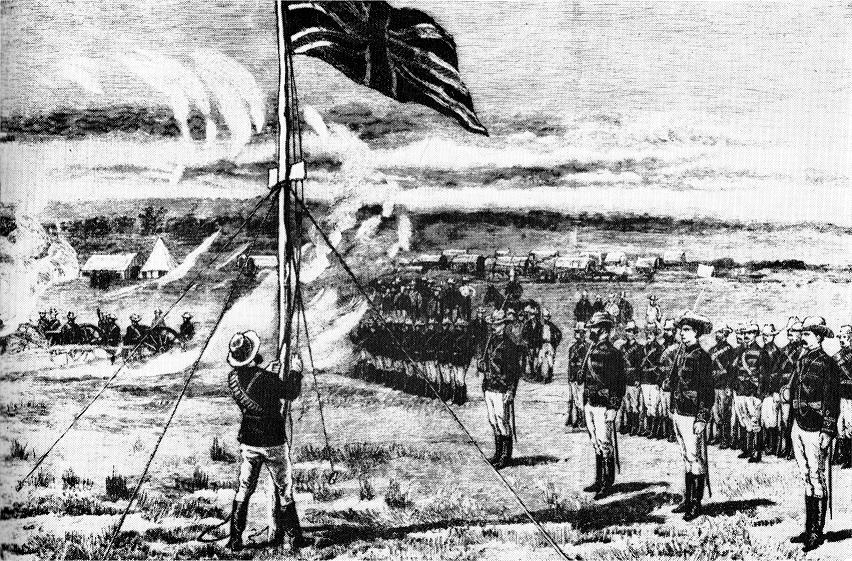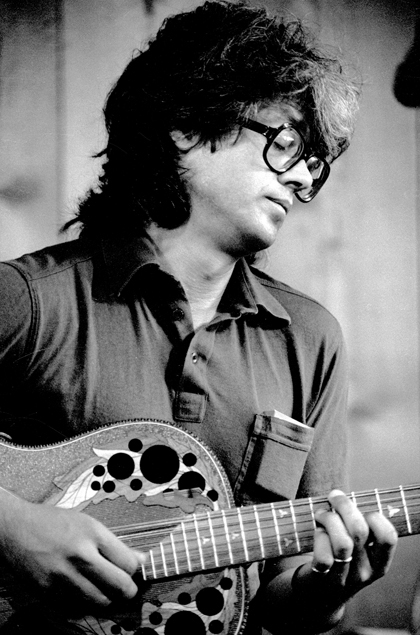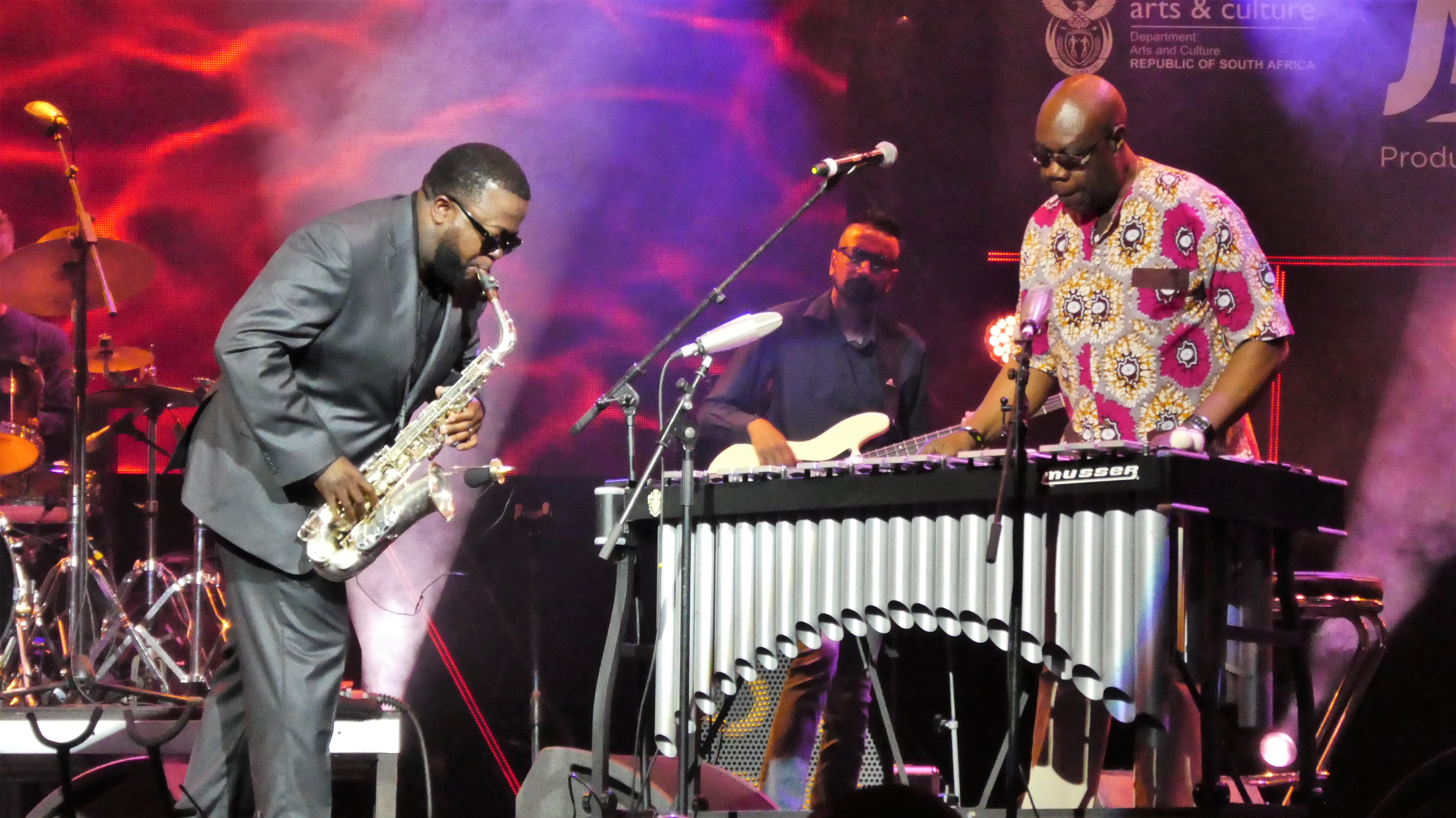|
The Book Café (Zimbabwe)
The Book Café is a platform for free cultural expression in Harare, Zimbabwe, since 1993. Book Cafe operates in partnership with leading cultural NGO Pamberi Trust to offer both diverse entertainment to the public at large as well as a space for artistic development – especially a platform for younger artists. book Cafe is known for its diversity of music and puts on a musical show almost everynight of the year. Almost every artist in Zimbabwe has performed at the Book Cafe. Background In the first eight years since the foundation, the Book Café organized 7,500 concerts and events, 650 public debates, 70 book presentations and 35 theater performances, and did it offer stage to 150 international touring acts.Zimbabwe Online Press (27 December 2012''Pamberi Trust Book Cafe in Harare will be shut down at the end of the year'' The Book Café was originally created by Paul Brickhill, in order for his band, ''Luck Street Blues'' featuring Miriam Mandipira, David Ndoro and his son ... [...More Info...] [...Related Items...] OR: [Wikipedia] [Google] [Baidu] |
Harare
Harare ( ), formerly Salisbury, is the Capital city, capital and largest city of Zimbabwe. The city proper has an area of , a population of 1,849,600 as of the 2022 Zimbabwe census, 2022 census and an estimated 2,487,209 people in its metropolitan province. The city is situated in north-eastern Zimbabwe in the country's Mashonaland region. Harare Metropolitan Province incorporates the city and the municipalities of Chitungwiza, Epworth, Zimbabwe, Epworth and Ruwa. The city sits on a plateau at an elevation of above sea level, and its climate falls into the subtropical highland category. The city was founded in 1890 by the Pioneer Column, a small military force of the British South Africa Company, and was named Southern Rhodesia, Fort Salisbury after the British Prime Minister Robert Gascoyne-Cecil, 3rd Marquess of Salisbury, Lord Salisbury. Company Company rule in Rhodesia, administrators Demarcation line, demarcated the city and ran it until Southern Rhodesia achieved respo ... [...More Info...] [...Related Items...] OR: [Wikipedia] [Google] [Baidu] |
Zimbabwe
file:Zimbabwe, relief map.jpg, upright=1.22, Zimbabwe, relief map Zimbabwe, officially the Republic of Zimbabwe, is a landlocked country in Southeast Africa, between the Zambezi and Limpopo Rivers, bordered by South Africa to the south, Botswana to the southwest, Zambia to the north, and Mozambique to the east. The capital and largest city is Harare, and the second largest is Bulawayo. A country of roughly 16.6 million people as per 2024 census, Zimbabwe's largest ethnic group are the Shona people, Shona, who make up 80% of the population, followed by the Northern Ndebele people, Northern Ndebele and other #Demographics, smaller minorities. Zimbabwe has 16 official languages, with English, Shona language, Shona, and Northern Ndebele language, Ndebele the most common. Zimbabwe is a member of the United Nations, the Southern African Development Community, the African Union, and the Common Market for Eastern and Southern Africa. The region was long inhabited by the San people, ... [...More Info...] [...Related Items...] OR: [Wikipedia] [Google] [Baidu] |
Artistic Freedom
Artistic freedom (or freedom of artistic expression) can be defined as "the freedom to imagine, create and distribute diverse cultural expressions free of governmental censorship, political interference or the pressures of non-state actors." Generally, artistic freedom describes the extent of independence artists obtain to create art freely. Moreover, artistic freedom concerns "the rights of citizens to access artistic expressions and take part in cultural life—and thus [represents] one of the key issues for democracy." The extent of freedom indispensable to create art freely differs regarding the existence or nonexistence of national instruments established to protect, to promote, to control or to censor artists and their creative expressions. This is why universal, regional and national legal provisions have been installed to guarantee the right to Freedom of speech, freedom of expression in general and of artistic expression in particular. In 2013, Ms Farida Shaheed, United Nat ... [...More Info...] [...Related Items...] OR: [Wikipedia] [Google] [Baidu] |
Debate
Debate is a process that involves formal discourse, discussion, and oral addresses on a particular topic or collection of topics, often with a moderator and an audience. In a debate, arguments are put forward for opposing viewpoints. Historically, debates have occurred in public meetings, academic institutions, debate halls, coffeehouses, competitions, and legislative assemblies. Debates have also been conducted for educational and recreational purposes, usually associated with educational establishments and debating societies. These debates emphasize logical consistency, factual accuracy, and emotional appeal to an audience. Modern competitive debate also includes rules for participants to discuss and decide upon the framework of the debate (how it will be judged). The term "debate" may also apply to a more continuous, inclusive, and less formalized process through which issues are explored and resolved across a range of agencies and among the general public. For example, ... [...More Info...] [...Related Items...] OR: [Wikipedia] [Google] [Baidu] |
Miriam Mandipira
Miriam (, lit. ‘rebellion’) is described in the Hebrew Bible as the daughter of Amram and Jochebed, and the older sister of Moses and Aaron. She was a prophetess and first appears in the Book of Exodus. The Torah refers to her as "Miriam the Prophetess" and the Talmud names her as one of the seven major female prophets of Israel. Scripture describes her alongside of Moses and Aaron as delivering the Jews from exile in Egypt: "For I brought you up out of the land of Egypt and redeemed you from the house of slavery, and I sent before you Moses, Aaron, and Miriam". According to the Midrash, just as Moses led the men out of Egypt and taught them Torah, so too Miriam led the women and taught them Torah. Biblical narrative Miriam was the daughter of Amram and Jochebed and the sister of Aaron and Moses, the leader of the Israelites in ancient Egypt. The narrative of Moses's infancy in the Torah describes an unnamed sister of Moses observing him being placed in the Nile; she is t ... [...More Info...] [...Related Items...] OR: [Wikipedia] [Google] [Baidu] |
Jazz Fusion
Jazz fusion (also known as jazz rock, jazz-rock fusion, or simply fusion) is a popular music genre that developed in the late 1960s when musicians combined jazz harmony and improvisation with rock music, funk, and rhythm and blues. Electric guitars, amplifiers, and keyboards that were popular in rock began to be used by jazz musicians, particularly those who had grown up listening to rock and roll. Jazz fusion arrangements vary in complexity. Some employ groove-based vamps fixed to a single key or a single chord with a simple, repeated melody. Others use elaborate chord progressions, unconventional time signatures, or melodies with counter-melodies. These arrangements, whether simple or complex, typically include improvised sections that can vary in length, much like in other forms of jazz. As with jazz, jazz fusion can employ brass and woodwind instruments such as trumpet and saxophone, but other instruments often substitute for these. A jazz fusion band is less likely to use ... [...More Info...] [...Related Items...] OR: [Wikipedia] [Google] [Baidu] |
South African Jazz
South Africa has a notable jazz scene. History The jazz scene in South Africa grew much as it did in the United States. Through performances in nightclubs, dances, and other venues, musicians had the opportunity to play music often. Musicians such as singer Sathima Bea Benjamin learned by going to nightclubs and jam sessions and waiting for opportunities to offer their talents. One unique aspect of the South African jazz scene was the appearance of individuals imitating popular artists as closely as possible because the real musician wasn't there to perform in the area. For instance, one could find a "Cape Town Dizzy Gillespie" who would imitate not only the music, but the look and style of Dizzy. This practice created a strong environment to nurture some artists who would eventually leave South Africa and become legitimate contributors to the international jazz scene. One of the first major bebop groups in South Africa in the 1950s was the Jazz Epistles. This group consisted o ... [...More Info...] [...Related Items...] OR: [Wikipedia] [Google] [Baidu] |
Mbira
Mbira ( ; ) are a family of musical instruments, traditional to the Shona people of Zimbabwe. They consist of a wooden board (often fitted with a resonator) with attached staggered metal Tine (structural), tines, played by holding the instrument in the hands and plucking the tines with the thumbs (at minimum), the right Index finger, forefinger (most mbira), and sometimes the left Index finger, forefinger. Musicology, Musicologists classify it as a lamellaphone, part of the plucked idiophone family of musical instruments. In Eastern and Southern Africa, there are many kinds of mbira, often accompanied by the hosho (instrument), hosho, a percussion instrument. It is often an important instrument played at religious ceremonies, weddings, and other social gatherings. The "Art of crafting and playing Mbira/Sansi, the finger-plucking traditional musical instrument in Malawi and Zimbabwe" was added to the UNESCO Intangible Cultural Heritage Lists#Representative list of the Intangible Cu ... [...More Info...] [...Related Items...] OR: [Wikipedia] [Google] [Baidu] |
Culture Of Zimbabwe
Zimbabwe has many different cultures, which may include beliefs and ceremonies, one of them being Shona. Zimbabwe's largest ethnic group is Shona. History The roots of Zimbabwean civilisation stretch far back in time, weaving a tapestry of cultural and political innovation. The tale begins with the Bantu-speaking farmers, who, during the Iron Age, traversed the Limpopo River, infusing the region with new agricultural techniques and ironworking skills (Beach, 1994). These migrants forged the foundation of early Zimbabwe, a cultural legacy evidenced today by the imposing stone walls of Great Zimbabwe, an architectural marvel that stood as the nerve centre of an influential precolonial state, flourishing between the 11th and 15th centuries (Fontein, 2006). Great Zimbabwe, which gave the modern nation its name, was a political and economic powerhouse, its influence rippling throughout Southern Africa. The city was part of an extensive trading network, exchanging gold, ivory, cop ... [...More Info...] [...Related Items...] OR: [Wikipedia] [Google] [Baidu] |
Musical Theatre Organizations
Musical is the adjective of music. Musical may also refer to: * Musical theatre, a performance art that combines songs, spoken dialogue, acting and dance * Musical film and television, a genre of film and television that incorporates into the narrative songs sung by the characters * MusicAL, an Albanian television channel * Musical isomorphism, the canonical isomorphism between the tangent and cotangent bundles See also * Lists of musicals * Music (other) * Musica (other) Musica (Latin), or La Musica (Italian) or Música (Portuguese and Spanish) may refer to: Music Albums * '' Musica è'', a mini album by Italian funk singer Eros Ramazzotti 1988 * ''Musica'', an album by Ghaleb 2005 * ), a German album by Giov ... * Musicality, the ability to perceive music or to create music * {{Music disambiguation ... [...More Info...] [...Related Items...] OR: [Wikipedia] [Google] [Baidu] |





